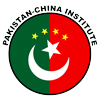Pakistan and China: Demographic Opposites that could attract
Date : April 20, 2013 By : Dr Zeba Sathar
 |
As the world’s population reached 7 billion in 2011, our region gained in its share of the world’s total. In sheer numbers Asia has a population of 4.1 billion today and will reach 4.8 billion in another twenty years. Most of this share will belong to the world’s largest population, that of China, which currently lies at 1.34 billion and will grow to 1.44 billion by 2030. India’s population of 1.22 billion will begin to surpass China’s population in 2030, and reach 1.5 billion. Pakistan, currently in sixth position with a population of 178 million, will become the fifth most populous country in the world, with China, India, the USA and Indonesia occupying the first four slots. In other words, with the exception of the USA, the largest populations will reside in Asia.
But other than being ranked together as being among the largest populations in the world, there is little in common between the demography of China and Pakistan. China, with the clear cut policy it announced in 1979 to control its population size, was unique in ruling its demographic destiny through its one-child policy. A population that could have spiraled to 1.8 billion will peak at 1.4 billion and will soon begin to decline. This is in complete contrast to the situation in Pakistan, where a voluntary family planning program was initiated in 1965, but where family planning services are far from being universally available or accepted. Population size in Pakistan will continue to rise for at least five more decades and may reach 400 million by the end of the century; China, on the other hand, has almost reached its maximum population size.
The rationale for the rather drastic measures taken in China was the intention to invest in human development and to focus on nourishing the economy. It entailed a huge cost, but the success that was achieved was truly remarkable, as evidenced by the dramatic improvement in China’s health and education indicators. The laissez faire approach taken by Pakistan, on the other hand, has accompanied the stagnancy and erosion in critical human indicators, most dramatically infant and child mortality, women’s status and literacy, and education. The number of citizens and the quality of life are concerns which have been addressed very differently by the two nations.
Pakistan is a ‘late starter’ in the process of demographic transition, the fertility decline in the country having begun in the 90’s, two decades after it had already commenced in China and most other Asian countries, including Bangladesh, India and Iran. Consequently, it will be one of the last countries in the region to complete the fertility transition. Fertility started falling in China much earlier - in the 70’s – and had reached replacement fertility by the 90’s, at which point fertility in Pakistan had barely began to decline. China vigorously implemented a severe policy, while Pakistan announced a policy but did little to implement it. Even today Pakistan does not have a clear policy or a consensus on what constitutes the ideal optimal population size; and measures to satisfy the alarmingly high levels of unmet need for family planning services remain a huge concern.
Now, in 2012, China and Pakistan are facing very different demographic opportunities and realities; there exists, however, a window of time in which they can benefit from their complementarities.
Figure 3 shows the totally different age structures evolving for China and Pakistan. While China is entering a major phase of aging population, and the section of the population which is above 60 years of age is assuming a substantial proportion, Pakistan is experiencing a peak in its youth population and an increasing magnitude of Pakistanis that are potentially of working ages. This could be a viable period of opportunity that countries like Pakistan can capitalize on: the country must exploit the demographic dividend in East Asia. Our working age population will be at a peak, while China and Japan, and most of the developed world, could face acute shortages in those sections of their populations that constitute their labor force.
Pakistan could avail the opportunity to utilize its labour force but for that to happen, human resource development has to be harnessed at full gear. We need to invest in human resources, and skills in demand, and, just as importantly, focus attention on the economy and on increasing employment opportunities, both within the country and in large neighbouring countries such as China. We need to train young persons in skills that are in short supply, negotiate trade treaties and open up commerce with China and other neighbors to improve our economic prospects. Through close and planned cooperation with China, Pakistan could stand a chance to reap benefits from its demographic dividend.
